
Roots
The story of our hair, particularly textured hair, is not simply a tale of strands and follicles. It is a deep, resonant echo of human ingenuity, cultural perseverance, and an enduring connection to the earth’s bounty. To understand contemporary hair care, especially for the beautiful coils and waves that define so many of us, we must first look to the past, to the wisdom held within ancient practices and the humble ingredients that once graced our ancestors’ scalps and lengths.
These are the very roots from which modern formulations draw their quiet strength, often without explicit acknowledgment. The curiosity that leads us to seek solutions for our hair today often finds its answers in traditions spanning millennia, traditions that speak of a time when the distinction between medicine, ritual, and daily beautification blurred into a singular, holistic approach.
Consider the earliest forms of hair tending, long before laboratories and complex chemical compounds. Our forebears, across continents and climates, observed their natural surroundings with a keen eye, discerning which plants offered solace to parched skin, which clays purified, and which oils bestowed a luminous sheen. These were not random acts, but careful, iterative discoveries, passed down through generations, each lesson honed by lived experience. The very air we breathe today, filled with the hum of modern life, still carries the faint scent of these ancient preparations, a testament to their lasting efficacy and gentle power.
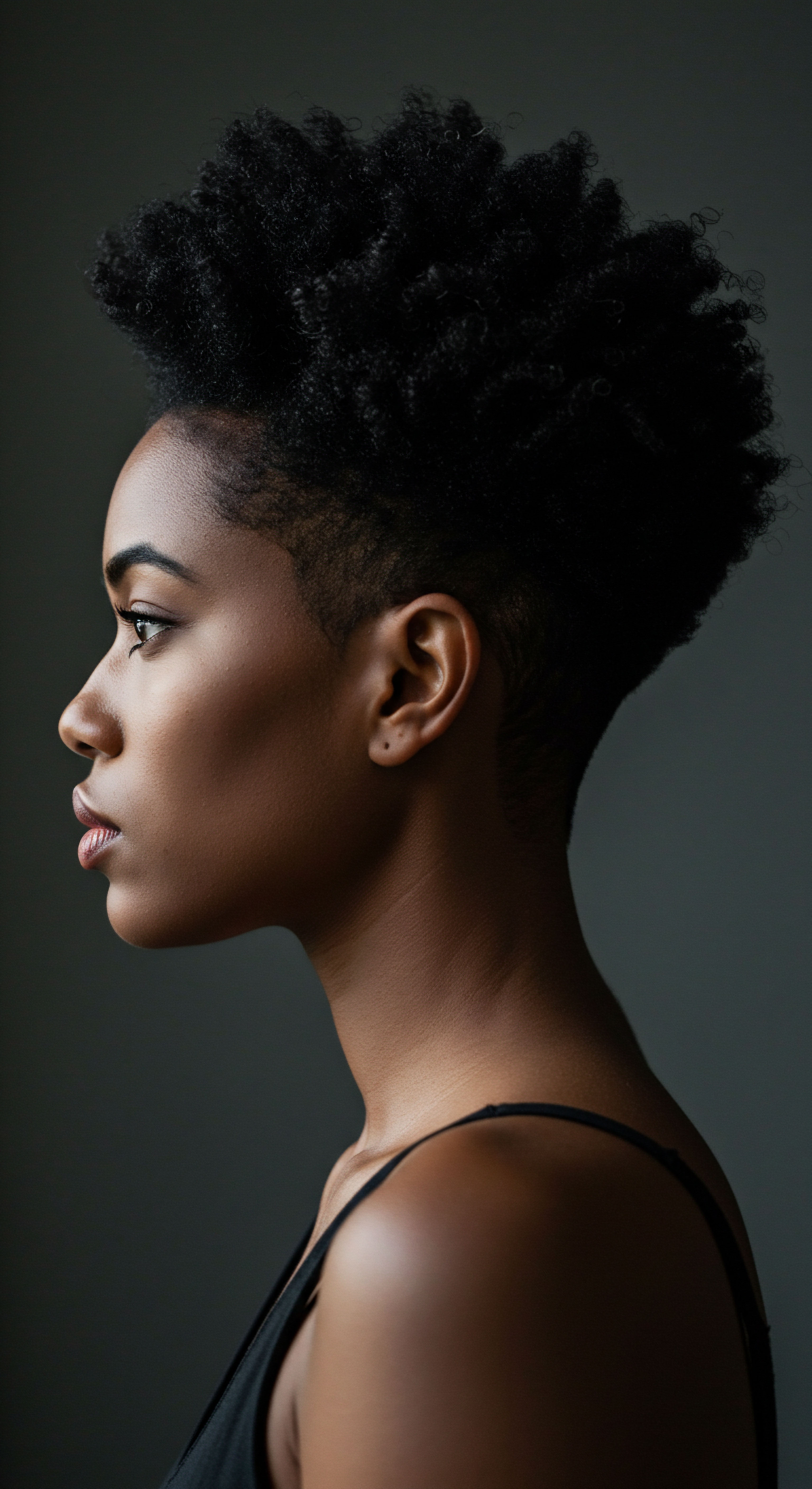
What Did Ancient Civilizations Use for Hair Care?
Across diverse civilizations, the quest for healthy, beautiful hair led to remarkable discoveries, many of which remain relevant. From the sun-drenched lands of ancient Egypt to the vibrant cultures of India and the wisdom of indigenous communities, specific ingredients became cornerstones of hair health.
- Castor Oil ❉ In ancient Egypt, this thick oil was a staple, used for conditioning and strengthening hair, often mixed with honey and herbs to promote growth and add shine. Cleopatra herself reportedly relied on it for her glossy black hair.
- Olive Oil ❉ A treasured secret of the ancient Greeks and Romans, olive oil served to keep hair soft and radiant. Infused with herbs like rosemary and lavender, it was massaged into the scalp to nourish from root to tip.
- Amla, Bhringraj, and Coconut Oil ❉ These ingredients stand at the heart of Ayurvedic hair care in India, used for centuries to nourish the scalp, strengthen hair, and even prevent premature graying.
- Rice Water ❉ For women in China, particularly the Yao women of Huangluo village, rice water has been the secret to remarkably long, strong, and lustrous hair, attributed to its richness in vitamins, minerals, and antioxidants.
- Shea Butter ❉ A gift from West Africa, shea butter has been used for centuries to moisturize and protect hair from harsh environmental conditions. Its ability to soften and lightly relax curls made it a valued pomade.
- Henna ❉ Originating in hot, arid regions like North Africa, the Middle East, and India, henna has been used for over 5000 years to dye hair, condition it, and even calm scalp inflammation and alleviate dandruff while boosting natural shine.
These ingredients were not merely applied; they were integrated into routines that honored the hair as a vital part of the self. The understanding of these fundamental components lays the groundwork for appreciating how deeply history influences our present-day hair care choices.
The enduring presence of natural ingredients in hair care, from ancient Egypt to contemporary formulations, speaks to a timeless pursuit of hair wellness.
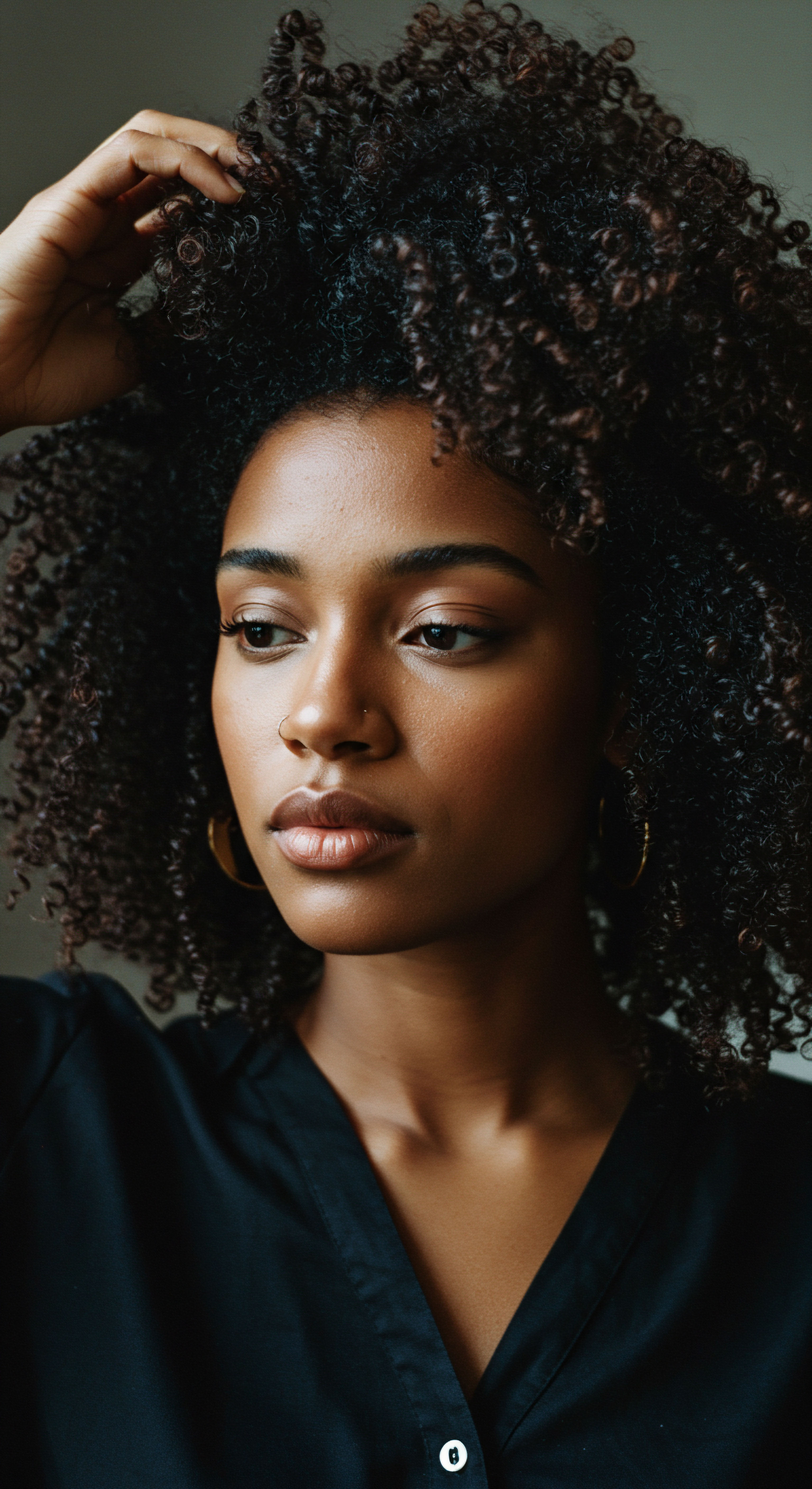
The Science of Simple Ingredients
Beyond anecdotal evidence and cultural practice, a quiet science often supported these historical choices. The humectant properties of honey, the occlusive and emollient nature of various plant oils, and the adsorptive capabilities of clays all contributed to tangible benefits. For instance, the use of Bentonite Clay, historically found in Iran and Africa, provided a natural means to moisturize, cleanse, and nourish hair. While modern scientific studies specifically on human hair are still emerging, research on sheep wool suggested bentonite clay could boost wool growth and softness, hinting at similar potential for human hair.
This elemental understanding of how natural substances interacted with hair and scalp allowed for the development of effective, albeit often simple, preparations. It is a quiet reminder that sometimes, the most profound solutions are those closest to the earth.

Ritual
Stepping beyond the individual ingredients, we encounter the concept of ritual – the repeated, purposeful actions that transform simple applications into profound acts of care. For those with textured hair, these rituals hold particular significance, often serving as acts of self-preservation, cultural affirmation, and communal bonding. The question then becomes, how do these ancient, deeply personal hair rituals translate into the products we reach for today, and what can we learn from their gentle cadence and intentionality? This section delves into the applied wisdom of the past, seeking to connect the hands that once mixed clay and oil to the hands that now dispense modern conditioners.
The daily or periodic practices of hair care in antiquity were rarely detached from their cultural context. They were not merely about cleanliness or aesthetics; they were about status, identity, and often, spirituality. The meticulous application of oils, the braiding of strands, or the careful preparation of herbal rinses were all acts embedded in a larger way of life. This deeper understanding of ritual provides a gentle guide for contemporary product development, suggesting that the most effective formulations are those that honor not just the hair’s physical needs, but also its story.
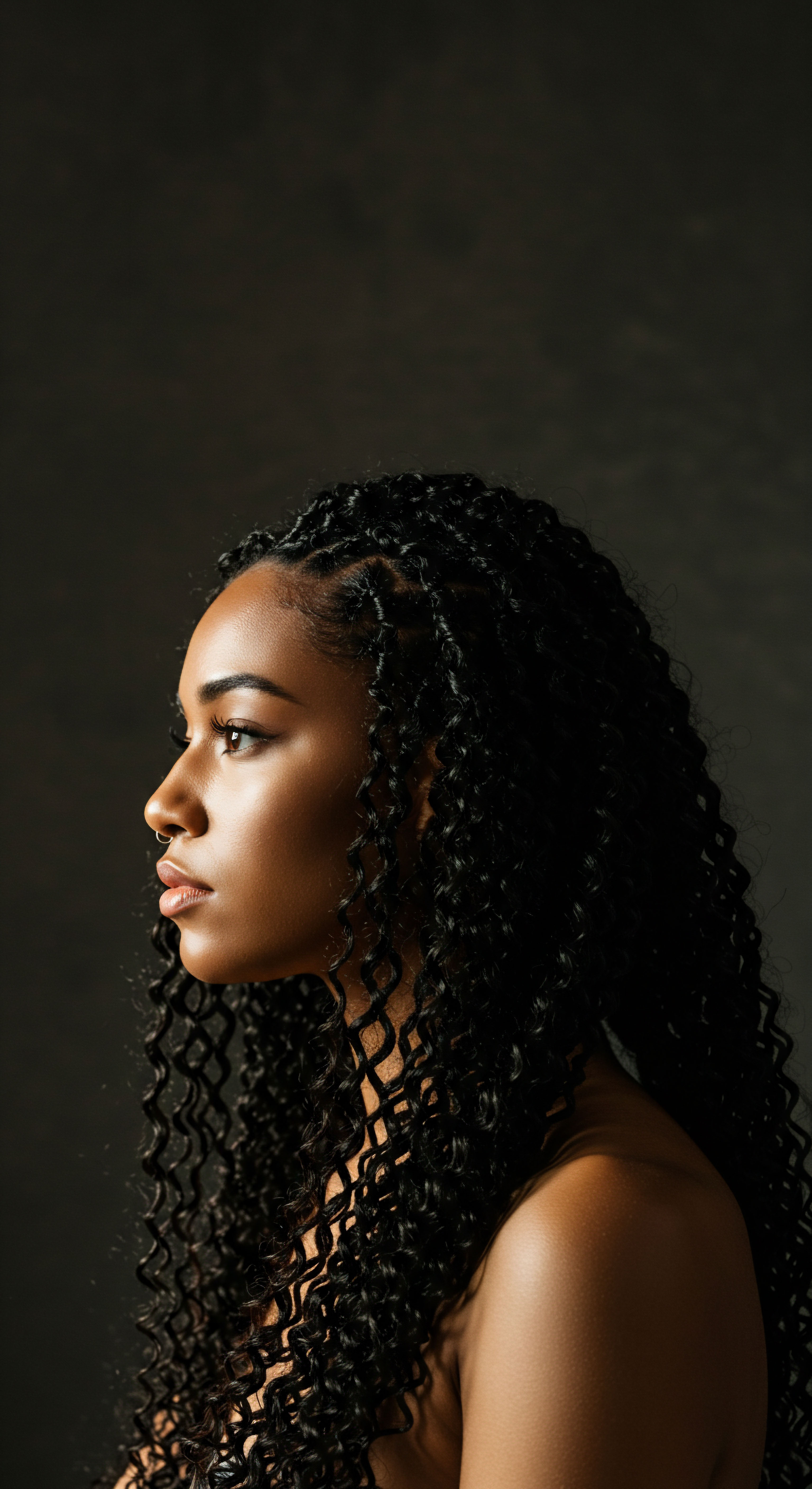
Can Ancient Hair Care Rituals Inform Modern Product Development?
The rhythms of ancient hair care offer a compelling blueprint for modern product creation. When we consider how these practices were carried out, we see a focus on gentle treatment, sustained nourishment, and a mindful approach that often contrasts with the fast-paced, quick-fix mentality of some contemporary markets.
One powerful example rests in the long-standing practice of oiling the hair and scalp. In India, the Ayurvedic tradition has emphasized the importance of daily oiling, often with herbs infused to suit individual constitutions, to maintain good health and prevent hair loss. This is not a superficial application but a methodical massage designed to stimulate the scalp and deliver nutrients. Modern product developers can learn from this sustained delivery system, creating oils and serums that are designed for deep penetration and long-term benefits, rather than just surface-level shine.
Similarly, the widespread use of rinses, from ancient Javanese rice water to European herbal infusions, points to the value of gentle cleansing and conditioning. These were often mild preparations, respecting the hair’s natural balance. Contemporary formulations can reflect this by moving towards gentler surfactants and incorporating botanical extracts that offer conditioning benefits without stripping the hair.
| Historical Practice Scalp Oiling & Massage |
| Key Ingredients Coconut oil, Amla, Olive oil, Castor oil |
| Contemporary Parallel Pre-shampoo treatments, scalp serums, hair oils for deep conditioning |
| Historical Practice Herbal Rinses & Infusions |
| Key Ingredients Rice water, Rosemary, Chamomile, Nettle |
| Contemporary Parallel Leave-in conditioners, botanical hair tonics, low-poo or no-poo cleansers |
| Historical Practice Clay Masks |
| Key Ingredients Bentonite clay, Rhassoul clay |
| Contemporary Parallel Detoxifying scalp masks, clarifying treatments |
| Historical Practice Natural Dyes & Conditioners |
| Key Ingredients Henna, Indigo |
| Contemporary Parallel Plant-based hair colors, conditioning masks with color benefits |
| Historical Practice Protective Styling Preparation |
| Key Ingredients Shea butter, Beeswax, Plant resins |
| Contemporary Parallel Styling creams, pomades, curl definers, protective style aids |

The Gentle Wisdom of Formulation
The transition from historical practices to modern product development calls for a thoughtful consideration of how ancient wisdom can be distilled into accessible forms. This involves understanding the active compounds within traditional ingredients and pairing them with modern scientific understanding to enhance efficacy and safety.
For example, the long history of Shea Butter use in Africa for moisturizing and protecting hair, especially for textured hair, offers a clear path for its continued prominence in modern formulations. Its rich composition of fatty acids and vitamins makes it an excellent emollient. Contemporary products often isolate these beneficial compounds or combine shea butter with other ingredients to create targeted solutions for dryness, breakage, and definition, honoring its traditional role while optimizing its delivery.
Ancient hair care rituals, with their emphasis on natural ingredients and mindful application, provide a timeless source of inspiration for contemporary product formulation.
The very act of caring for textured hair, with its unique needs for moisture retention and curl definition, finds deep resonance in these historical practices. The patience involved in preparing and applying traditional remedies mirrors the gentle attention required for coily and kinky textures. This connection underscores that the best hair care products are not just about what they contain, but how they invite us to engage with our hair, transforming routine into a mindful ritual.

Relay
As we move from the elemental roots and purposeful rituals, we arrive at the relay – the passing of knowledge, often across generations and continents, which shapes our deepest understanding of hair care. Here, the conversation expands to embrace the scientific validation of age-old practices, the cultural significance that binds communities through shared beauty traditions, and the often-overlooked socio-economic dimensions of ingredient sourcing. The query, “Can historical ingredient uses inform contemporary hair care product development?”, invites us into a space where ancestral wisdom meets modern inquiry, where the tangible benefits of a plant are weighed against its cultural narrative and its potential for equitable commerce. This section delves into the intricate dance between heritage and innovation, exploring the profound implications of drawing from the past to shape the future of hair care.
The sophistication of traditional knowledge systems, particularly those related to botanical remedies, is increasingly acknowledged by contemporary science. This is not a simple adoption of old ways, but a thoughtful dialogue between historical efficacy and modern analytical rigor. The complexities of textured hair, with its diverse porosity, density, and curl patterns, demand solutions that are both scientifically sound and culturally attuned. This is where the relay becomes most vibrant, a dynamic exchange that pushes the boundaries of what hair care can achieve.
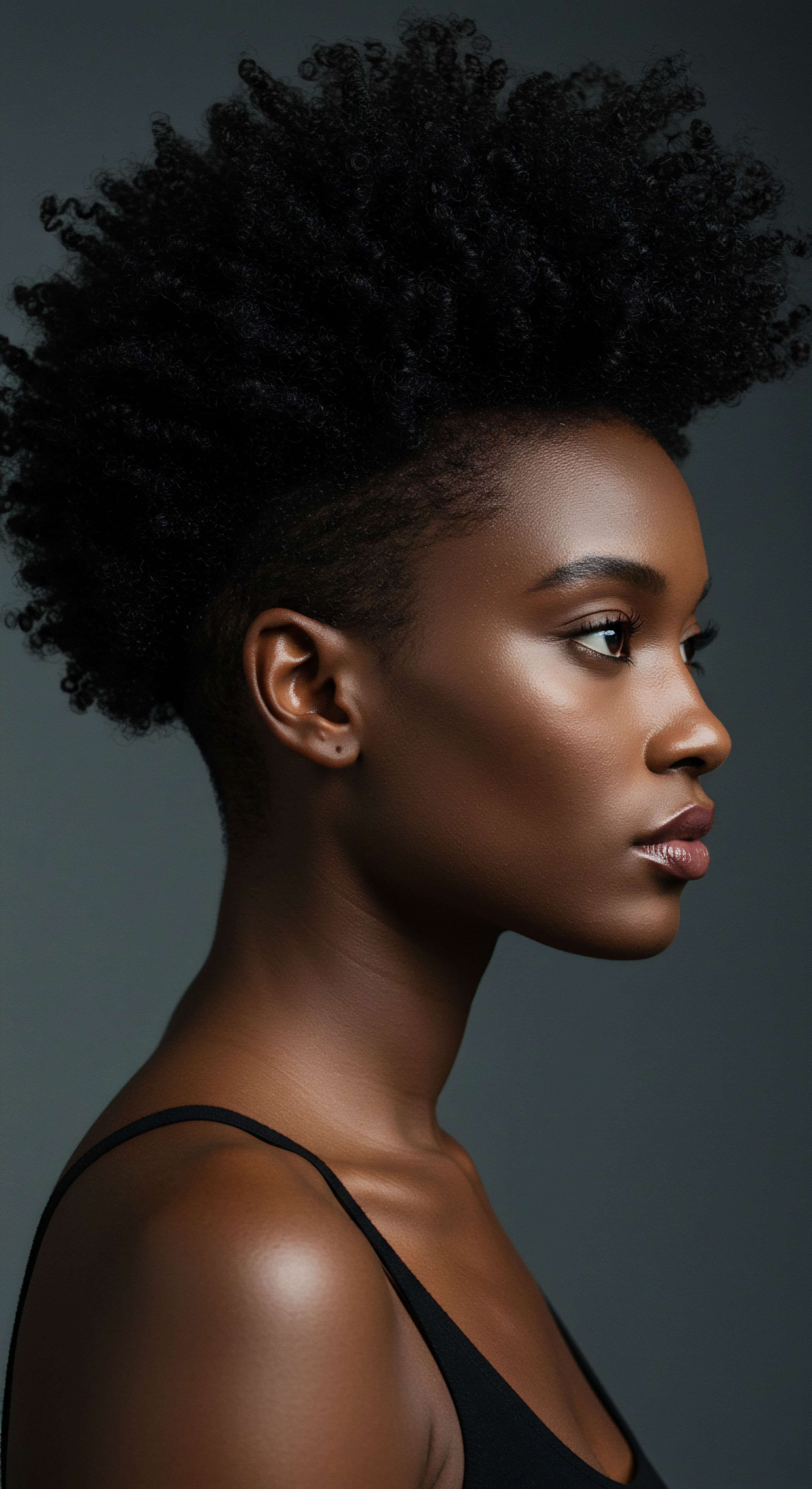
Do Ethnobotanical Studies Support Ancient Hair Care Efficacy?
Ethnobotanical research, the study of how people of a particular region traditionally use local plants, offers compelling support for the efficacy of many historical hair care ingredients. While some traditional therapies have been dismissed as anecdotal, a growing body of scientific inquiry validates their benefits.
Consider the case of traditional Chinese medicine (TCM) and its approach to hair health. Herbs like He Shou Wu (Polygonum multiflorum) and Ginseng (Panax ginseng) have been used for centuries to promote hair growth and prevent premature graying. Modern studies indicate that He Shou Wu may strengthen hair follicles and stimulate regrowth, while Ginseng can improve blood circulation to the scalp, delivering vital nutrients. One study showed that after taking P.
multiflorum for three and six months, 97% of participants experienced significant improvement in hair loss. This points to a powerful synergy between historical observation and contemporary validation.
Similarly, African ethnobotanical studies, though still scarce in the realm of hair care specifically, are beginning to summarize knowledge about plants used for various hair conditions. Research has identified dozens of species, many used for hair treatment and care, with some species showing potential as antidiabetic treatments when taken orally, hinting at a systemic effect beyond just topical application. For example, Lawsonia inermis L.
(Henna) is used by Moroccan women to strengthen, revitalize, color, and restore shine to hair, and is also known for its anti-hair loss and anti-dandruff properties. This deeper investigation into the physiological mechanisms of traditional plant uses offers a sophisticated pathway for product development.
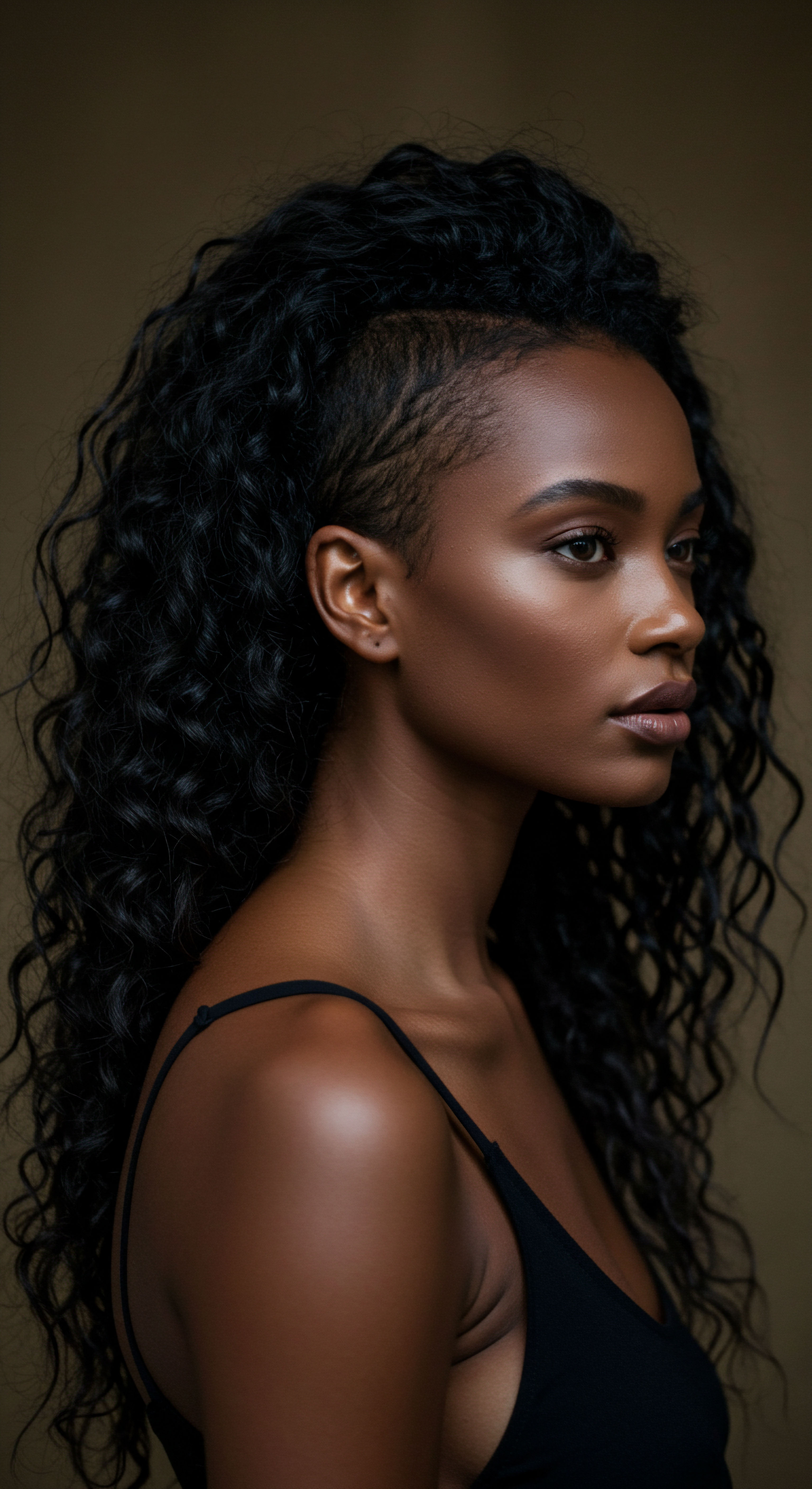
How Does Sourcing Historical Ingredients Create Social Impact?
The journey of historical ingredients from their traditional origins to contemporary product formulations carries significant social and economic implications. Sourcing practices can either perpetuate inequities or empower communities.
A powerful illustration of this lies in the production of Shea Butter. Often called “women’s gold,” shea butter production is a primary source of income for an average of three million African women. These women are involved in the arduous process of harvesting, washing, and preparing shea nuts, from which the oil is extracted. The globalization of shea butter has meant that while its benefits are enjoyed worldwide, the economic stability of the women who produce it becomes paramount.
Ethical sourcing ensures that these communities receive fair compensation, promoting sustainable livelihoods and respecting the cultural heritage tied to the ingredient. This moves beyond a mere transactional exchange, recognizing the deep historical and communal value inherent in the ingredient itself.
The journey of historical ingredients from traditional origins to contemporary products presents an opportunity for equitable community empowerment through ethical sourcing.
Another critical aspect is the preservation of indigenous knowledge. When companies partner with traditional communities, they gain access to centuries of accumulated wisdom about plant properties and applications. This collaboration, when done respectfully, can ensure that the benefits of commercialization are shared, and that traditional practices are not merely extracted but honored and sustained. It is a nuanced approach that prioritizes long-term relationships and cultural preservation alongside scientific advancement.
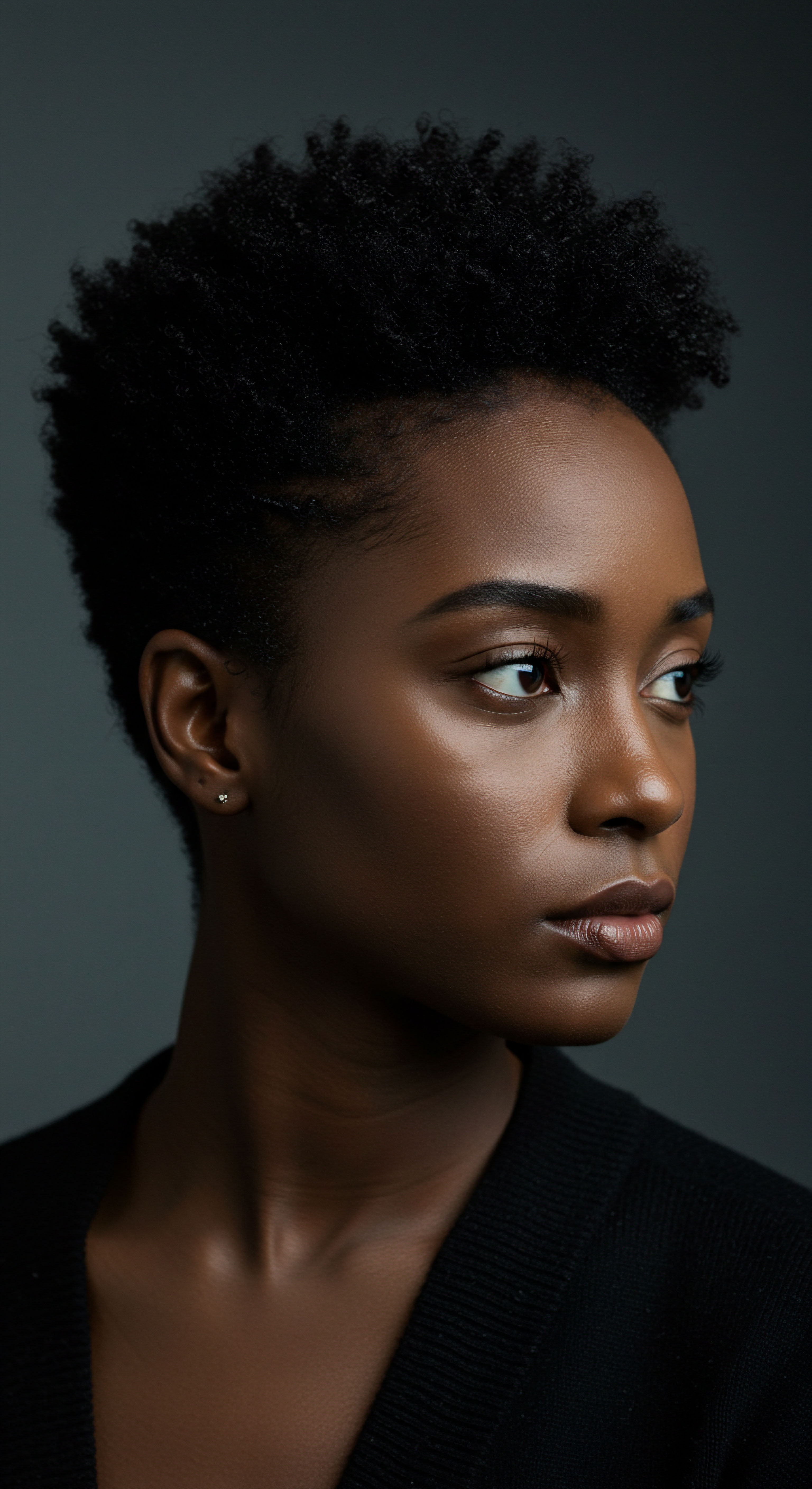
Can Modern Hair Care Products Avoid Controversial Ingredients While Honoring Tradition?
The pursuit of clean beauty and the increasing consumer demand for transparency have led to a critical examination of ingredients. Some modern cosmetic components, while effective, have sparked debate due to potential health concerns or environmental impact. This contrasts sharply with the generally natural origins of historical hair care.
One prominent example involves certain synthetic polymers, such as Polyvinylpyrrolidone (PVP), widely used as a hair fixative in contemporary styling products. While offering strong hold, some consumers and brands are questioning the long-term implications of such synthetic materials. This concern mirrors broader shifts in consumer preference towards “clean beauty” brands without a history of controversy.
Conversely, historical ingredients, by their very nature, tend to be perceived as safer and more aligned with a holistic approach to wellness. Henna, for instance, offers a natural alternative to synthetic dyes, providing color while also strengthening and conditioning hair, without the harsh chemicals often found in conventional hair dyes. The shift back to such ingredients reflects a desire to reconnect with practices that are gentle on both the hair and the environment.
The challenge for contemporary product development lies in finding the balance ❉ leveraging scientific advancements for stability and delivery, while prioritizing ingredients that align with the safety and efficacy observed in historical uses. This means a careful consideration of ingredient lists, a commitment to transparent sourcing, and a willingness to step away from quick-fix synthetics in favor of more sustainable, time-tested natural alternatives. The market is increasingly rewarding brands that make these conscious choices, signaling a return to the foundational principles of care that defined ancient hair rituals.
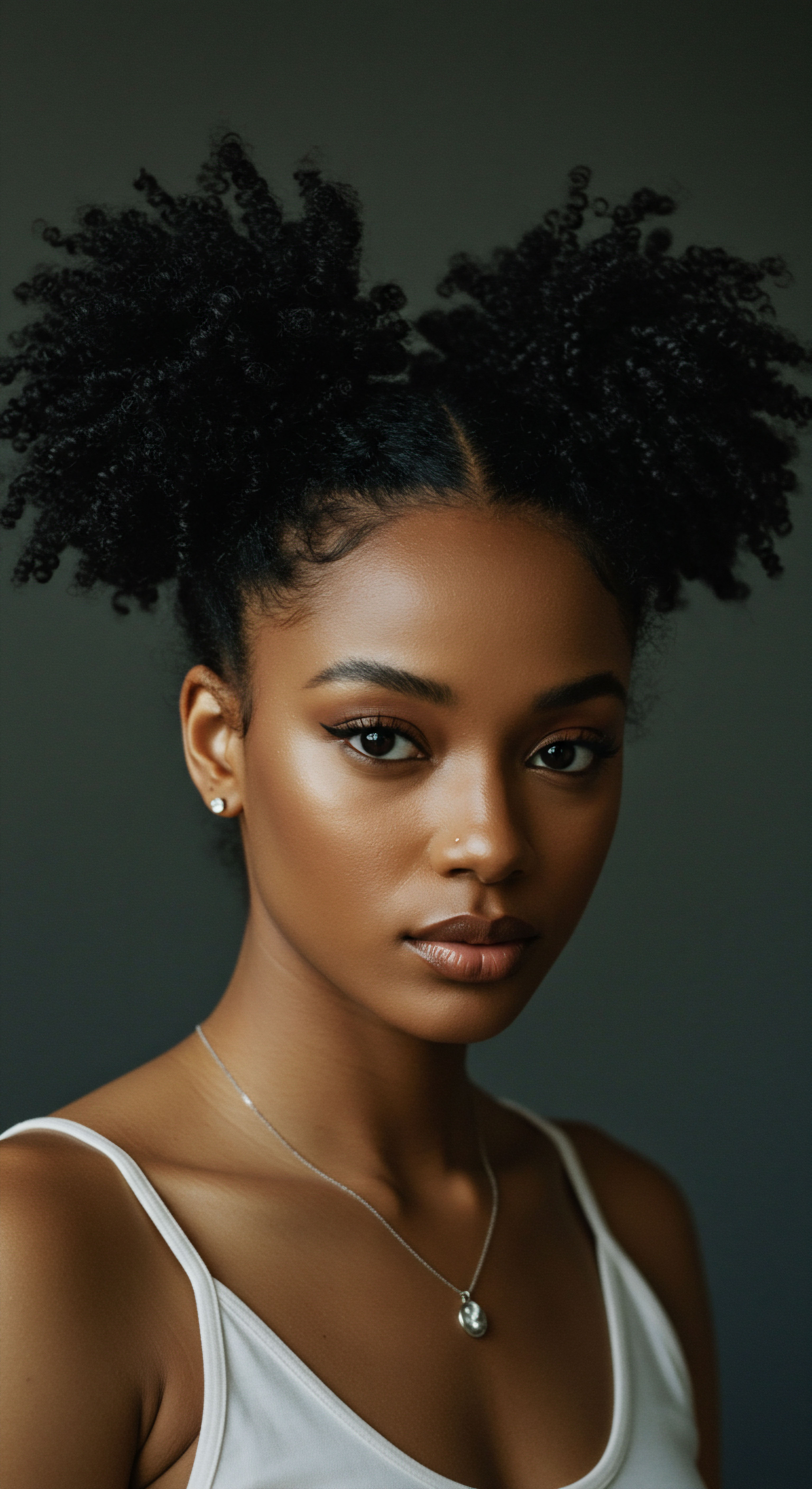
Reflection
As we draw this exploration to a close, a quiet understanding settles. The journey through ancient practices and their contemporary echoes reveals something profound about our connection to hair – a connection that transcends mere aesthetics. It speaks to identity, to heritage, to the enduring human desire for wellness that is deeply rooted in the natural world.
The gentle wisdom of our ancestors, who understood that true beauty springs from thoughtful care and reverence for the earth’s gifts, continues to whisper its truths. We find ourselves at a fascinating juncture, where the whispers of the past are amplified by the clarity of modern science, inviting us to create a future for hair care that is both innovative and deeply mindful.
The path forward is not about abandoning progress for nostalgia, nor is it about blindly embracing every ancient remedy. Instead, it is about discerning, with a soft hand and a keen mind, which timeless principles hold enduring value. It is about honoring the hands that first crushed herbs and pressed oils, recognizing their knowledge as a precious inheritance.
For those of us with textured hair, this journey is particularly resonant, as our coils and curls carry the living memory of these traditions. The beauty of our hair, in all its diverse expressions, becomes a living testament to the powerful, continuous relay of wisdom from one generation to the next, from ancient earth to modern strand.

References
- Ahmad, N. & Ahmad, M. (2018). Traditional Uses of Medicinal Plants for Hair Care. In Herbal Medicine ❉ Back to the Future. IntechOpen.
- Choudhary, A. & Kaur, R. (2021). Ayurvedic Herbs for Hair Growth and Scalp Health. Journal of Ayurveda and Integrative Medicine, 12(3), 273-279.
- Fletcher, J. (1995). Ancient Egyptian Hair ❉ A Study of its Production, Management and Social Context. University College London.
- Guerra-Doce, E. et al. (2023). Direct evidence of the use of multiple psychoactive plants at a Bronze Age funerary cave in Menorca (Western Mediterranean). Scientific Reports, 13(1), 5616.
- Islam, M. S. et al. (2017). Shea Butter ❉ A Comprehensive Review of its Botanical Origin, Traditional Uses, Chemical Composition, and Biological Activities. Journal of Pharmacy and Pharmacology, 69(11), 1435-1446.
- Kerharo, J. & Adam, J. G. (1974). La Pharmacopée Sénégalaise Traditionnelle ❉ Plantes Médicinales et Toxiques. Vigot Frères.
- Ovid. (2002). The Art of Love and Other Poems. (J. K. Newman, Trans.). Hackett Publishing Company. (Original work published circa 1 CE)
- Pliny the Elder. (1855). The Natural History. (J. Bostock & H. T. Riley, Trans.). Taylor and Francis. (Original work published circa 77-79 CE)
- Rabino Massa, E. & Conti Fuhrman, A. (1980). Hair in Ancient Egypt ❉ An Anatomical, Chemical and Anthropological Study. Journal of Human Evolution, 9(4), 311-319.
- Wang, J. et al. (2022). Traditional Chinese Medicine for Hair Loss ❉ A Review. Frontiers in Pharmacology, 13, 856789.